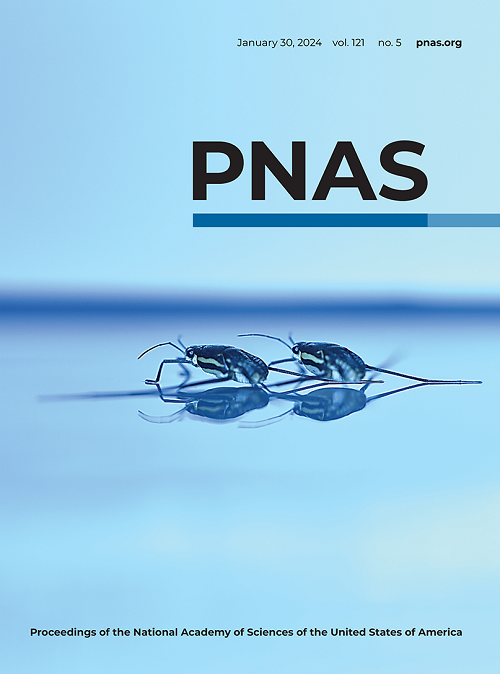Dynamic early recruitment of GAK–Hsc70 regulates coated pit maturation
IF 9.4
1区 综合性期刊
Q1 MULTIDISCIPLINARY SCIENCES
Proceedings of the National Academy of Sciences of the United States of America
Pub Date : 2025-05-27
DOI:10.1073/pnas.2503738122
引用次数: 0
Abstract
Clathrin-mediated endocytosis (CME) begins with the assembly of clathrin onto the plasma membrane. These structures grow and stabilize to form clathrin-coated pits (CCPs), which invaginate and accumulate cargo. Finally, through membrane fission, CCPs detach to form clathrin-coated vesicles (CCVs). Mechanisms governing the transition of CCPs from flat-to-curved structures have been a matter of debate. GAK and its chaperone protein, Hsc70, are well known to mediate clathrin release from CCVs, and several studies have observed a late burst of GAK recruitment as CCVs form. Other studies have proposed that early recruitment of GAK–Hsc70 could function to provide the necessary energy source to remodel nascent flat clathrin lattices, replacing hexagons with pentagons and enabling a gain of curvature and invagination of the growing CCP; however, direct functional evidence is lacking. Here, we show that GAK knockdown inhibits CCP stabilization and invagination. Furthermore, mutations in the J domain of GAK that abolish Hsc70 recruitment to and activation at CCPs lead to the accumulation of GAK at CCPs, hinder CCP stabilization and invagination, and result in a striking increase in the proportion of highly transient, abortive CCPs. These findings support the hypothesis that GAK–Hsc70 promotes the turnover and remodeling of nascent clathrin assemblies required for curvature development during CME.GAK-Hsc70的动态早期募集调控包膜坑成熟
网格蛋白介导的内吞作用(CME)始于网格蛋白在质膜上的组装。这些结构生长并稳定形成网格蛋白包覆的凹坑(ccp),凹坑内陷并积聚货物。最后,通过膜裂变,ccp分离形成网格蛋白包被的囊泡(CCVs)。控制ccp从平面到弯曲结构转变的机制一直是一个有争议的问题。众所周知,GAK及其伴侣蛋白Hsc70介导网格蛋白从ccv中释放,一些研究已经观察到随着ccv的形成,GAK的募集在后期爆发。其他研究提出,GAK-Hsc70的早期募集可以提供必要的能量来源,以重塑新生的扁平网格蛋白晶格,用五边形取代六边形,并使生长中的CCP获得曲率和内翻;然而,缺乏直接的功能证据。在这里,我们发现GAK敲低抑制CCP稳定和内陷。此外,GAK的J结构域突变会破坏Hsc70在CCP的招募和激活,导致GAK在CCP的积累,阻碍CCP的稳定和内翻,并导致高度短暂的流产CCP的比例显著增加。这些发现支持了GAK-Hsc70促进CME期间曲率发展所需的新生网格蛋白组装的周转和重塑的假设。
本文章由计算机程序翻译,如有差异,请以英文原文为准。
求助全文
约1分钟内获得全文
求助全文
来源期刊
CiteScore
19.00
自引率
0.90%
发文量
3575
审稿时长
2.5 months
期刊介绍:
The Proceedings of the National Academy of Sciences (PNAS), a peer-reviewed journal of the National Academy of Sciences (NAS), serves as an authoritative source for high-impact, original research across the biological, physical, and social sciences. With a global scope, the journal welcomes submissions from researchers worldwide, making it an inclusive platform for advancing scientific knowledge.

 求助内容:
求助内容: 应助结果提醒方式:
应助结果提醒方式:


